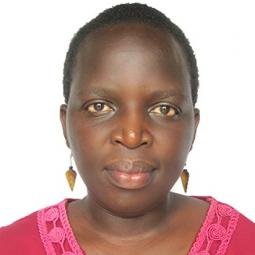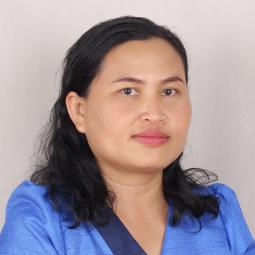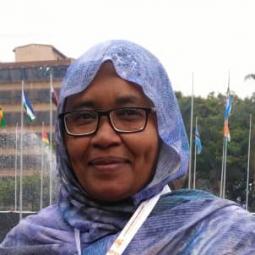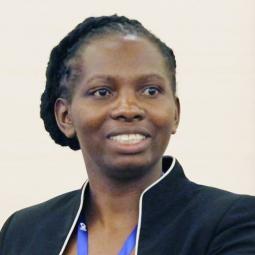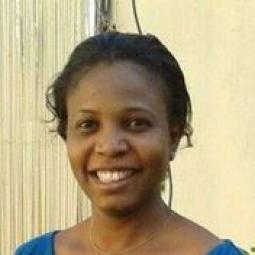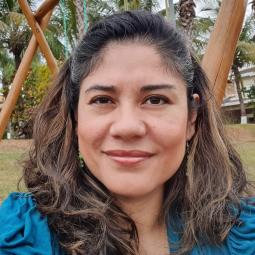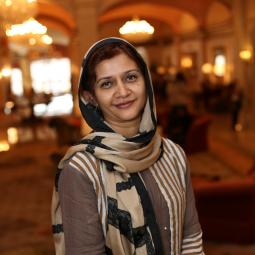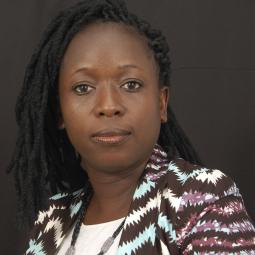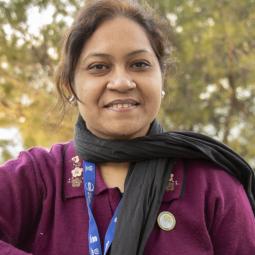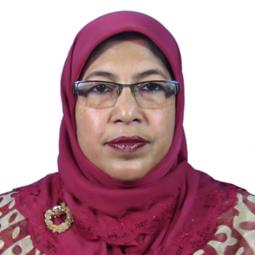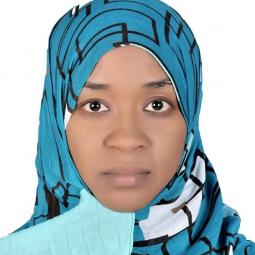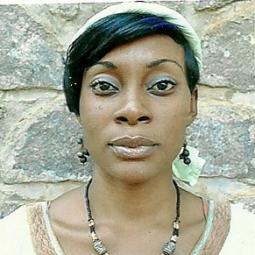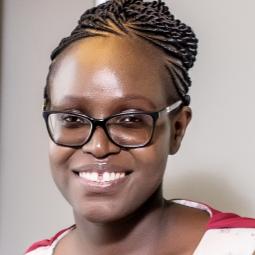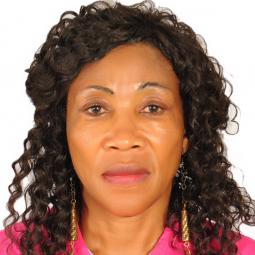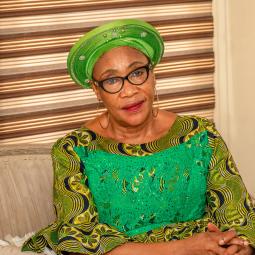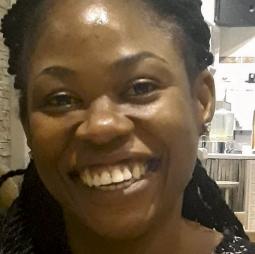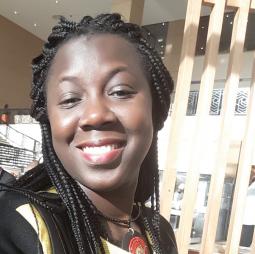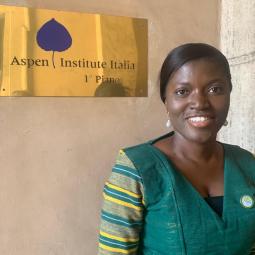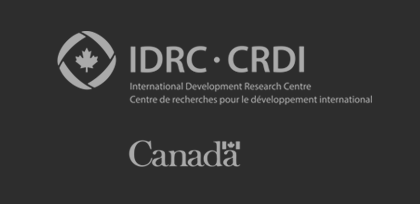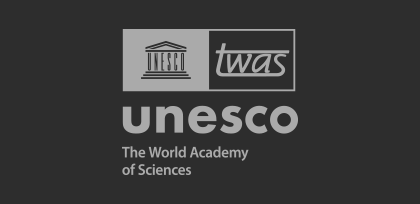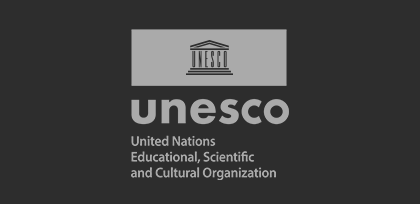OWSD Nigeria National Chapter Presents: Evidence-based research for Women in Science
August 25, 2020
Thirteenth edition of the OWSD Nigeria National Chapter University of Port Harcourt Branch series of scientific communications: Chinedum Peace Babalola on women in STEM
EVIDENCE-BASED RESEARCH FOR WOMEN IN SCIENCE
By
Chinedum Peace Babalola
Women in STEM have surely come a long way. It is an undeniable fact that much has been accomplished by women in this largely male dominated space. The journey so far has not been a smooth one; especially when we have to deal with changing the narratives of stereotypes and prejudices even in the space of research. Although struggles for women may differ across the diverse aspects of Science, Technology, Education and Mathematics, however, we have a common goal.
According to UNESCO INSTITUTE OF STATISTICS (UIS) data, less than 30% of the world’s researchers are women. UIS data also show the extent to which these women work in the public, private or academic sectors, as well as their fields of research. There is need to identify the qualitative factors that deter women from pursuing careers in science, technology, engineering and mathematics (STEM). Numerous studies have found that women in STEM fields publish less, are paid less for their research and do not progress as far as men in their careers. However, there is very little data at the international or even country level showing the extent of these disparities.
STEM and Gender Advancement (SAGA) is a global UNESCO project supported by the Government of Sweden through the Swedish International Development Cooperation Agency (Sida). The general objective of SAGA is to contribute to reducing the gender gap in science, technology, engineering and mathematics (STEM) fields in all countries at all levels of education and research, by determining, measuring and assessing sex-disaggregated data, as well as supporting the design and implementation of policy instruments that affect gender equality in STEM.
While worldwide figures of women students and graduates in higher education have grown steadily in the last decade, women are still a minority in STEM fields, both in numbers of graduates (especially at Ph.D. level), and in the research profession.
Evidence-based practice for researchers concentrates on the types, quality, and conduct of research studies that gather evidence that may be informative for decision making. It also involves the process of gathering and synthesizing scientific evidence from various sources and translating it to be applied to practice.
Study Designs that Gather Evidence
The design of a study has great impact on the trustworthiness of its results and hence, the level of scientific evidence it can provide. Various entities have come up with a hierarchical system for grading levels of scientific evidence based on the strengths and weaknesses of various study designs. For example, in general, the highest level of evidence that can inform clinical practice comes from randomized controlled trials (RCTs) and systematic reviews or meta-analyses of RCTS. However, in some cases other study designs (cohort, case-control, cross-sectional, case studies, etc.) can also provide information useful for decision-making.
Nobel prize winners are discoverers who carried out evidence –based researches
Only 53 women in total have been awarded the Nobel Prize between 1901 and 2019.
The Nobel Prize in Physics 1903, Marie Curie, née Sklodowska “in recognition of the extraordinary services they have rendered by their joint researches on the radiation phenomena discovered by Professor Henri Becquerel”.
The Nobel Prize in Chemistry 2009, Ada E. Yonath “for studies of the structure and function of the ribosome”
The Nobel Prize in Physiology or Medicine 2009, Elizabeth H. Blackburn “for the discovery of how chromosomes are protected by telomeres and the enzyme telomerase”
The Nobel Prize in Physiology or Medicine 1988, Gertrude B. Elion “for their discoveries of important principles for drug treatment”
The Nobel Prize in Physiology or Medicine 2008, Françoise Barré-Sinoussi “for their discovery of human immunodeficiency virus”
The Nobel Prize in Physiology or Medicine 1947, Gerty Theresa Cori, née Radnitz “for their discovery of the course of the catalytic conversion of glycogen”
Women who changed science, have been awarded Nobel Prizes for their scientific achievements. They include biochemists, X-ray crystallographers, pharmacologists, neuro-embryologists and nuclear physicists. They include Nobel Laureates from the early 1900s. They are the children of teachers, grocers, scientists and artists.
Some rarely left their labs; some travelled the world to collaborate with other scientists or to advocate for a cause.
Each is as unique as her contribution to scientific knowledge, but all possess common traits: creativity, vision, passion and – perhaps most importantly – persistence.
As Nobel Laureate Rosalyn Yalow has said: “The world cannot afford the loss of the talents of half of its people if we are to solve the many problems which beset us.”
Evidence based research (EVB) involves translational research, impactful research, innovation research, benchside to bedside research, implementation research among others.
What is research?
Research is “a systematic investigation, including research development, testing and evaluation, designed to develop or contribute to generalisable knowledge (FHI, 2000)”
Systematic: An organized, formally structured methodology to obtain new knowledge. It commonly implies the development of a research protocol with clearly stated objectives.
Generalisable: The obtained knowledge is intended to have a broad or general application beyond the group that participated in the research. The new knowledge will have applications beyond the study setting.
Research is designed and implemented in ways that generate the knowledge sought (value)
Scientific validity: the design is methodologically rigorous (application of best practices; comprehensive review of literature, adequate sample, correct analysis). All scientifically flawed research are unethical.
Independent review of proposal and monitoring of research by a supervisor or superior or a more knowledgeable person is very important
Competent persons (e.g students and supervisors, investigators) conduct research and findings of study are disseminated appropriately.
There are new approaches to research and they include Translational research, Applied research, Multidisciplinary research, Basic research, Multi-national research, mHealth, One health, innovation, implementation, Evidence-Informed Decision-Making (EIDM) etc.
Evidence informed Decision Making (EIDM)
I was one of the participants (Plus Dr Nwaichi Eucharia) from East and West Africa selected to participate in this workshop, which held 22nd – 24th May, 2019, in Nairobi, Kenya.
Sensitization workshop on pathways to Entrenching and Evidence informed Decision Making (EIDM) culture was organized by African Institute for Development policy (AFIDEP) and The African Academy of Sciences (AAS).
The overall aim of the workshop was to empower scholars to proactively engage governments to use evidence and champion the institutionalization of EIDM. The specific objectives were:
1. To increase the number of Academic leaders championing EIDM in East and West Africa.
2. To convey evidence uptake.
3. To develop EIDM capacity.
4. To introduce EIDM leadership award within the AAS.
5. To increase the number of agencies in East and West Africa taking actions than seek to institutionalize EIDM.
When evidence is used consistently in decision making, the following happens:
1. The right proprieties are set.
2. Resources are optimally allocated.
3. Cost effective intervention are designed and implemented.
4. There is continuous monitoring and learning to improve performance or stop non effective programmes.
The Template for EIDM includes:
- Description of intervention;
- What opportunities exist in your country for introducing & implementing this intervention?
- How feasible is the intervention - how would this be funded in the long-run? How would you sustain interest in the intervention?
- What challenges would you face? How would you address the challenges?
Evidence generates multiple benefits to improve service delivery, accountability and ultimately improve people’s lives. Evidence is about informing policy and not determining policy.
Differences between basic research and applied research
Basic research, also called pure research or fundamental research, is scientific research aimed to improve scientific theories for improved understanding or prediction of natural or other phenomena.
Applied research, uses scientific theories to develop technology or techniques to intervene and alter natural or other phenomena.
Both are often driven by curiosity. Basic research fuels applied science's innovations. The two aims are often coordinated in research and development (R&D)
Embracing Evidence Based Research
If anything, the current times which we are in is stressing the great need for more work in the area of research. The covid19 pandemic has proven that humanity is resilient. Regardless of what nature throws, the will to thrive in the midst of turbulence pushes man by nature. This is what gives birth to the motivations for research work.
In embracing an approach that is evidence based in our work as scientists and women, some factors can be taken into consideration.
- An entrepreneurial mindset is to be embraced; this is a problem solving mentality which is required to be on the path to get the various answers to the existing problems in STEM.
- Confidence and dealing with the imposter syndrome; it is understandable that we are still outnumbered in Science as women, however, this should not be an obstacle. Gender should not at all be an hindrance to excellence.
- Data-driven research; the truth remains that the numbers never lie. Conducting data driven research provides us the required hard earned proof to answer STEM questions and problems.
- Utilising Archives; It is called a ‘research’ for a reason. This means that previous works must have been done in our respective fields, our archives may be the key to some answers.
- Collaborations; the power of a team is never to be underestimated. Now more than ever for evidence based research to be carried out by women, we have to be willing to work with one another.
- Connecting evidence with the necessary beneficiaries; bodies have been put in place to help scale up our evidence based research. It is our duty as women to reach out to the target beneficiaries in making sure the purpose of our work is achieved.
Achievements, Contributions and Recognitions of Nigerian women
While it is most recognizable that women, moreso African women, are still very much underrepresented in STEM, it is important to highlight great accomplishments, contributions and notable recognitions of African women who are doing greatly and making extensive waves in the field of research in STEM. These women are sources of inspiration for other women in research, young women who are upcoming and will be for little girls who probably have never heard of the term STEM.
Grace Oladunni Taylor; A biochemist, formerly at University of Ibadan, Nigeria. She was the second woman to be inducted into the Nigerian Academy of Science and the first African awarded a L'Oréal-UNESCO Award for Women in Science in 1998.
Adeyinka Falusi; (my mentee) a Professor of Haematology, College of Medicine, University of Ibadan. For her novel discoveries in sickle cell disease. She is the president and Founder of Sickle Cell Hope Alive Foundation (SCHAF). She won the L'Oréal-UNESCO Awards for Women in Science Laureate for Africa in 2001.
Francisca Nneka Okeke: She is a Professor of Physics at the University of Nigeria, Nsukka and first female. She was named L'Oréal-UNESCO For Women in Science Awards Laureate for Africa in 2013 for her significant contributions to the understanding of daily variations of the ion currents in the upper atmosphere which may further our understanding of climate change, among others.
DISRUPTION BY COVID-19
It has changed world, led to New Normal, Disruption, Innovation and Change. View it as an opportunity for EBD. Disruptive innovation (DI) is necessary i.e. thinking outside the box. COVID-19 pandemic is disrupting research across the world.The pandemic has halted most academic, industry, and government basic science and applied research, or redirected research to COVID- 19.
It is an opportunity. Many are carrying out better research and publishing more. Find opportunity, learn more, apply for research grants, collaborate and you will be a better impactful researcher.
Conclusion: The world is moving and the advent of the digital age is being effected on the future of work. Countries with higher levels of inequality (higher GH values) tend to present higher relative values of scientific productivity in the field. It is now more than ever that women need a mind shift to evolve in knowledge and idea innovation. Collaborations in research are very necessary as there are lots of access to grants.
Chinedum Peace Babalola (BPharm, PhD, FAS, FAAS)
Department of Pharmaceutical Chemistry and
Centre for Drug Discovery Development & Production (CDDDP)
Faculty of Pharmacy, University of Ibadan
Oyo State, Nigeria
Currently:
The Vice-Chancellor
Chrisland University, Abeokuta, Nigeria
Email: peacebab@gmail.com, cp.babalola@mail.ui.edu.ng, peacebab2001@yahoo.com; vc@chrislanduniversity.edu.ng; cpeace@chrislanduniversity.edu.ng
Websites: http://pharm.ui.edu.ng; http://en.wikipedia.org/wiki/babalola_Chinedum_Peace; www.chrislanduniversity.edu.ng

